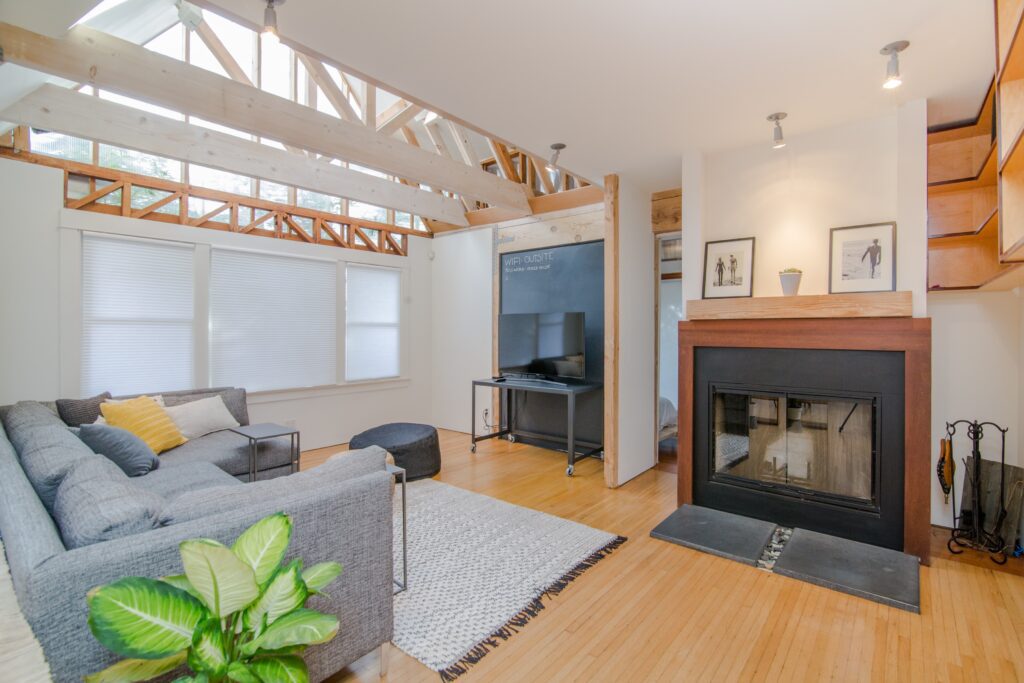In this article, we explore the fascinating relationship between seasonality and rental property occupancy rates. As the seasons change throughout the year, so do the desires and needs of renters. From beachfront villas in the summer to cozy cabins in the winter, understanding the effect of seasonality on occupancy rates can help property owners maximize their rental income. Join us as we delve into this intriguing topic and uncover the key factors that influence rental demand during different times of the year. Whether you’re a property owner or simply interested in the dynamics of the rental market, this article will provide valuable insights that can help you make informed decisions.



This image is property of images.unsplash.com.
Understanding Seasonality in the Rental Market
Definition of Seasonality
Seasonality refers to the regular, predictable fluctuation in rental market demand and occupancy rates throughout the year. It is influenced by various factors such as climate, weather, tourism, and cultural events. Seasonality often manifests as periods of high demand and occupancy rates during peak seasons, followed by lower demand and occupancy rates during off-peak periods. Understanding seasonality is crucial for rental property owners and managers to effectively plan and maximize their rental property’s occupancy and financial performance.
How Seasonality Affects the Rental Market
Seasonality has a significant impact on the rental market, directly influencing rental property occupancy rates, rental rates, and vacancy rates. This fluctuation in demand affects the overall revenue and profitability of rental properties. It is essential for property owners to consider these seasonal trends as they can have a profound effect on their rental property’s success.
Factors Influencing Seasonality in the Rental Market
Several factors contribute to seasonality in the rental market. Climate and weather changes play a crucial role in rental demand, as people may be more inclined to rent properties in certain seasons due to favorable outdoor conditions. For example, beachfront rentals may experience a surge in demand during the summer season when people are looking for vacation getaways.
Tourism also significantly influences seasonality in the rental market. Popular tourist destinations experience peak seasons when visitors flock to these locations, driving up rental demand. Additionally, events such as festivals, concerts, and conferences can create temporary spikes in rental demand during specific times of the year.
Cultural and academic calendars also contribute to rental market seasonality. University towns often experience higher rental demand during the academic year when students require housing. Moreover, cultural events can attract visitors to specific areas, leading to increased rental demand during those times.
Impact of Seasonality on Rental Property Occupancy Rates
Factors that Influence Rental Occupancy Rates
Several factors contribute to rental property occupancy rates, including seasonality. Location and property condition play crucial roles in attracting tenants year-round. Property amenities, proximity to transportation, schools, and other amenities also influence rental occupancy rates. Additionally, effective marketing and pricing strategies can impact the attractiveness of rental properties and, consequently, their occupancy rates.
How Seasonality Directly Affects Occupancy Rates
Seasonality directly affects rental property occupancy rates. Properties in locations with high seasonality experience significant fluctuations in occupancy rates throughout the year. During peak seasons, occupancy rates tend to be higher as rental demand increases. Conversely, off-peak periods see lower occupancy rates as demand declines.
Examples of Seasonal Fluctuations in Occupancy Rates
To illustrate the impact of seasonality on rental property occupancy rates, consider the following examples:
-
Ski Resort Town: In a ski resort town, occupancy rates are typically highest during the winter season when tourists flock to enjoy winter sports. Hotels, vacation rentals, and seasonal rentals experience full occupancy during this time. However, during the summer months, when skiing is not possible, occupancy rates significantly drop.
-
University Town: In a university town, rental occupancy rates are at their highest during the academic year, as students require housing. Once summer break begins, many students leave the area, leading to a decline in occupancy rates during these months.
-
Coastal Vacation Destination: A coastal vacation destination experiences a surge in occupancy rates during the summer season when people seek beachfront rentals for their vacations. However, during the colder months, occupancy rates decrease as fewer individuals are interested in beach-focused activities.



This image is property of images.unsplash.com.
Positive Effects of Seasonality on Occupancy Rates
Increased Demand During High Seasons
One of the positive effects of seasonality on rental property occupancy rates is increased demand during high seasons. When rental properties are in high demand, owners and managers can capitalize on this opportunity to maximize their occupancy rates. By understanding and catering to the preferences and needs of potential renters during peak seasons, property owners can attract a greater number of tenants and maintain high occupancy levels.
Higher Rental Rates During Peak Periods
Another positive effect of seasonality on rental property occupancy rates is the opportunity to command higher rental rates during peak periods. As demand increases, property owners can adjust their rental rates accordingly. With limited supply and high demand, owners can often charge premium rates, resulting in increased rental income during these seasons. This can significantly contribute to the financial success of rental properties.
Boost in Short-Term and Vacation Rentals
Seasonality can also lead to a boost in short-term and vacation rentals. Many individuals seek temporary accommodations during high seasons, whether for vacations, business trips, or special events. By offering short-term rental options, property owners can attract these individuals and enjoy higher occupancy rates during peak seasons. This flexibility in rental durations can be advantageous in maximizing rental income.
Negative Effects of Seasonality on Occupancy Rates
Reduced Demand During Off-Peak Times
One of the negative effects of seasonality on rental property occupancy rates is reduced demand during off-peak times. When rental demand declines, occupancy rates naturally decrease as well. This can pose a challenge for property owners, especially if their rental properties heavily rely on seasonal demand. Off-peak periods may require additional efforts to attract tenants and maintain satisfactory occupancy rates.
Lower Rental Rates
Seasonality can also result in lower rental rates during off-peak times. As demand decreases, property owners may need to adjust their rental rates to remain competitive and attract tenants. Lower rental rates can directly impact rental property revenue and profitability, especially if they are not offset by increased occupancy rates during peak seasons.
Increase in Vacancies
During off-peak periods, the rental market may experience an increase in vacancies. With reduced demand, property owners may face difficulties in finding tenants to occupy their rental properties. Vacancies can lead to financial strain, as owners are responsible for ongoing property expenses without generating rental income. It is essential for property owners to strategize and mitigate the negative impact of vacancies during slower seasons.



This image is property of images.unsplash.com.
Seasonality in Different Geographical Locations
Effect of Climate and Weather Changes on Rental Demand
Climate and weather changes significantly influence rental demand in various geographical locations. Areas with favorable weather conditions tend to experience increased rental demand during seasons when outdoor activities are more enjoyable. For example, coastal areas often see higher rental demand during the summer when individuals seek beachside accommodations. On the other hand, areas with harsh weather conditions during certain seasons may experience lower rental demand.
Impact of Tourist Seasons in Vacation Rental Markets
Tourist seasons have a considerable impact on the rental market, particularly in vacation rental markets. Popular vacation destinations often experience distinct high and low tourist seasons. Property owners in these areas need to be aware of these fluctuations and adjust their marketing and pricing strategies accordingly. Understanding the timing of tourist seasons is crucial for maximizing rental occupancy rates and revenue potential.
Regional Differences in Rental Market Seasonality
Seasonality in the rental market can vary significantly across different regions. Regions with strong tourism industries are likely to have more pronounced seasonal fluctuations, while areas with stable, year-round demand may display less seasonality. Local economic factors, cultural events, and industry-specific trends also contribute to regional differences in rental market seasonality. Property owners and managers must analyze and adapt to these regional variations to optimize their rental property’s performance.
Managing Fluctuations in Rental Occupancy Rates
Effective Marketing Strategies for Different Seasons
Managing fluctuations in rental occupancy rates requires implementing effective marketing strategies for different seasons. Property owners should tailor their marketing efforts to target potential tenants during peak and off-peak periods. This may involve highlighting specific features and amenities that are particularly attractive during each season, emphasizing proximity to relevant attractions, and utilizing targeted advertising channels to reach the right audience.
Flexible Pricing Strategies
Flexible pricing strategies can help property owners manage fluctuations in rental occupancy rates. During peak seasons, owners can set higher rental rates to maximize revenue. In contrast, during off-peak times, owners may consider offering promotional pricing or discounted rates to attract tenants. By adjusting rental rates to match the demand and supply dynamics of each season, property owners can optimize occupancy rates and maintain a consistent stream of rental income throughout the year.
Maintaining a Balance between Short-term and Long-term Tenants
Maintaining a balance between short-term and long-term tenants can help property owners mitigate the impact of seasonality on occupancy rates. While short-term rentals may be in higher demand during peak seasons, long-term tenants provide stability and consistent rental income during off-peak periods. By offering both rental options and marketing them effectively, property owners can optimize occupancy rates and minimize the negative effects of seasonality.
Mitigating the Negative Effects of Seasonality
Offering Incentives During Off-Peak Seasons
To mitigate the negative effects of seasonality, property owners can consider offering incentives during off-peak seasons. These incentives can include discounted rental rates, waived fees, or additional amenities for tenants. By providing added value during slower seasons, property owners can attract tenants and maintain satisfactory occupancy rates, even amidst reduced demand.
Diversifying Rental Portfolio
Diversifying the rental property portfolio can also help mitigate the negative effects of seasonality. By investing in rental properties in different locations with varying seasonality patterns, owners can spread their risk and capitalize on diverse rental demand. Additionally, having a mix of property types, such as short-term vacation rentals and long-term residential rentals, can provide a buffer against fluctuations in rental occupancy rates.
Investing in Year-Round Rental Markets
Another strategy to mitigate the negative effects of seasonality is to invest in year-round rental markets. Locations with stable, year-round demand offer a more consistent stream of rental income, reducing the impact of seasonal fluctuations. By conducting thorough market research and identifying areas with robust rental demand throughout the year, property owners can minimize the challenges associated with seasonality.
Case Studies Highlighting the Impact of Seasonality
Case Study 1: Seasonality in a Tourist-driven Rental Market
In a popular beachfront destination, rental properties experience significant seasonality. The peak season occurs during the summer months when tourists flock to the area for beach vacations. Rental occupancy rates during this time are consistently high, with properties commanding premium rental rates. However, during the colder months, rental demand declines, resulting in lower occupancy rates and rental rates. Property owners in this market need to focus on maximizing revenue during the peak season and strategize to attract tenants during off-peak periods through targeted marketing and competitive pricing.
Case Study 2: Seasonality in a University-based Rental Market
A university town experiences distinct seasonality due to its academic calendar. Rental occupancy rates are highest during the academic year when students require housing. However, during summer and winter breaks, many students leave the area, leading to significantly lower occupancy rates. Property owners in this market need to adjust their rental strategies to cater to the influx and exodus of students. This may involve offering shorter lease terms during the academic year and exploring alternative rental opportunities, such as short-term vacation rentals, during the breaks.
Case Study 3: Seasonality in a Large Urban Rental Market
In a large urban rental market, seasonality is less pronounced compared to tourist or university-driven markets. The rental demand remains relatively stable throughout the year, with slight fluctuations during holiday periods. Property owners in this market focus on maintaining consistent rental rates and occupancy levels, leveraging the appeal of their location, amenities, and proximity to public transportation and employment hubs.
Future Trends Impacting Seasonality in Rental Occupancy Rates
Impact of Remote Work on Seasonal Rental Trends
The rise of remote work has the potential to impact seasonal rental trends. As more individuals embrace the flexibility of remote work arrangements, they may choose to relocate temporarily or work from different locations throughout the year. This can lead to increased demand for short-term rentals and contribute to a blurring of traditional rental seasonality patterns. Property owners should monitor and adapt to these evolving trends to capitalize on changing rental demand patterns.
Climate Change and its Effect on Rental Seasonality
Climate change can also influence rental market seasonality patterns. Changes in weather patterns and rising temperatures may alter the preferences and behaviors of potential tenants, impacting rental demand throughout the year. For example, coastal areas at risk of rising sea levels may experience shifts in rental demand as individuals seek properties in safer locations. Property owners need to stay informed about climate-related developments and adjust their rental strategies accordingly.
The Influence of Economic Shifts on Rental Market Seasonality
Economic shifts can have a significant impact on rental market seasonality. Changes in employment rates, industry growth or decline, and economic instability can influence rental demand patterns. During economic downturns, for example, rental demand may decrease as individuals are more cautious with their spending and opt for more affordable housing options. Property owners should stay informed about economic trends and proactively adapt their rental strategies to mitigate the effects of economic shifts on rental occupancy rates.
Conclusion: Strategies for Successful Rental Management Amidst Seasonality
Understanding the effect of seasonality on rental property occupancy rates is crucial for successful rental management. By recognizing and utilizing seasonal trends to their advantage, property owners can optimize occupancy rates and revenue potential. Implementing management strategies that mitigate the negative impact of seasonality, such as effective marketing, flexible pricing, and diversification, can help property owners maintain stable performance throughout the year. Ongoing research and adaptation to changing rental market dynamics are essential to stay ahead and thrive in the ever-evolving rental industry.
